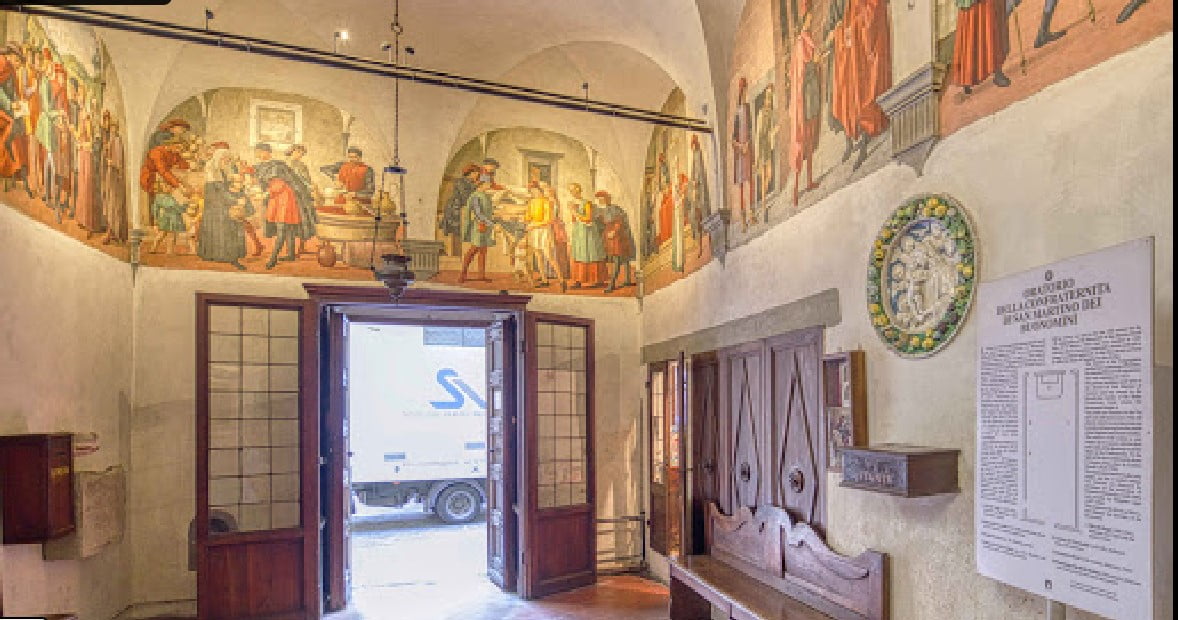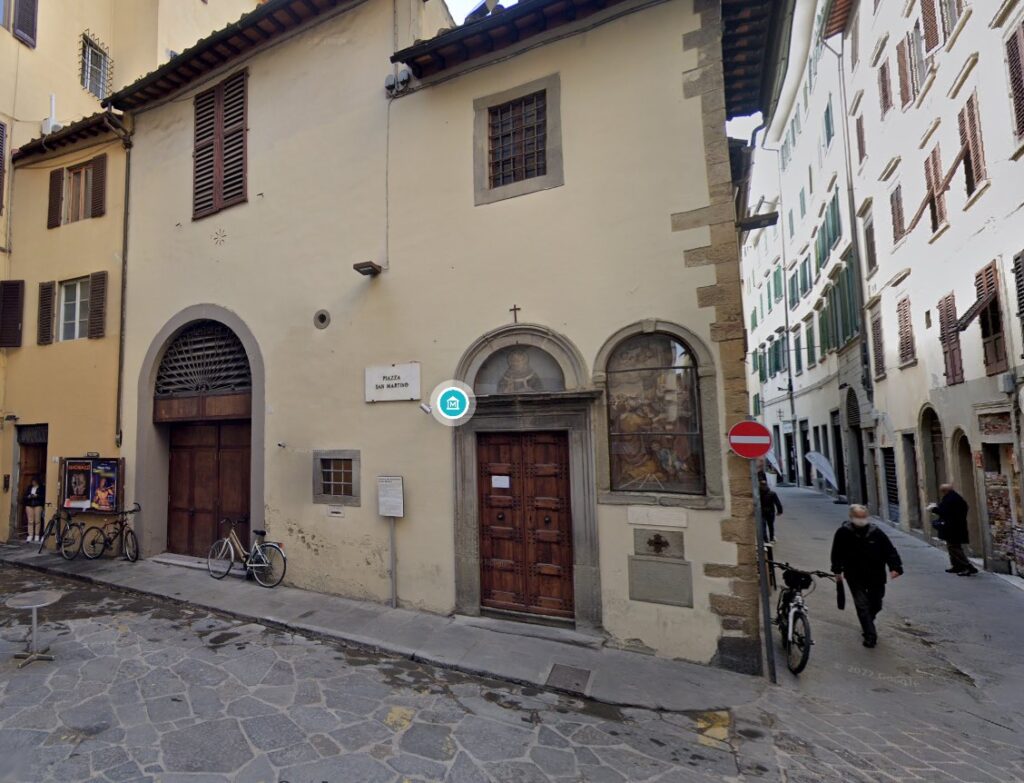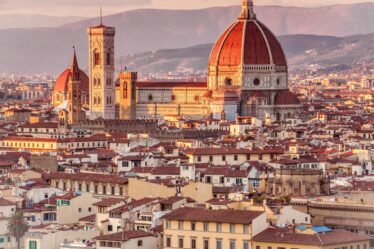

Located near the apse of the historic San Martino al Vescovo church—where Dante Alighieri married Gemma Donati—lies a site steeped in history. Though little remains of the original church, it was here that Dante once mingled with fellow parishioners, creating a lasting legacy.
This site also ties closely to the legacy of Archbishop Antonio Pierozzi, also known as Sant’Antonino, the founder of an organization dedicated to helping the “shamefaced” poor—those who had once been wealthy but had fallen on hard times. Embarrassed to seek help, these individuals found solace in the charitable efforts spearheaded by Sant’Antonino, who saw a pressing need in the community. His mission was a response to the hardships caused by Cosimo the Elder, who manipulated taxes to target his adversaries. In 1442, Sant’Antonino temporarily left his position as prior of San Marco, eventually establishing the organization under the patronage of San Martino di Tours, a Roman legionary known for sharing his cloak with a destitute man—a gesture that symbolized charity.
The organization set up its headquarters in 1478, adjacent to San Martino, later transforming the location into an oratory near the Torre della Castagna. The oratory is adorned with ten lunettes illustrating the activities of the confreres, along with a sacred bust by Verrocchio. Noteworthy is the work of the renowned miniaturist Francesco Di Antonio del Chierico, once attributed to the Ghirlandaio workshop, highlighting the era’s attire and customs. One tradition included providing dowries for impoverished girls, encapsulated by the saying, “Whoever wants a woman wants a dowry.”
During the 1522 plague, a now-sealed door in the oratory was used to distribute bread to the needy. Testamentary bequests were a key source of funds, with donations often solicited through the lighting of a lamp in times of urgent need. The last recorded instance of this practice occurred in 1949, marking the end of a long-standing tradition of charity and community support.



